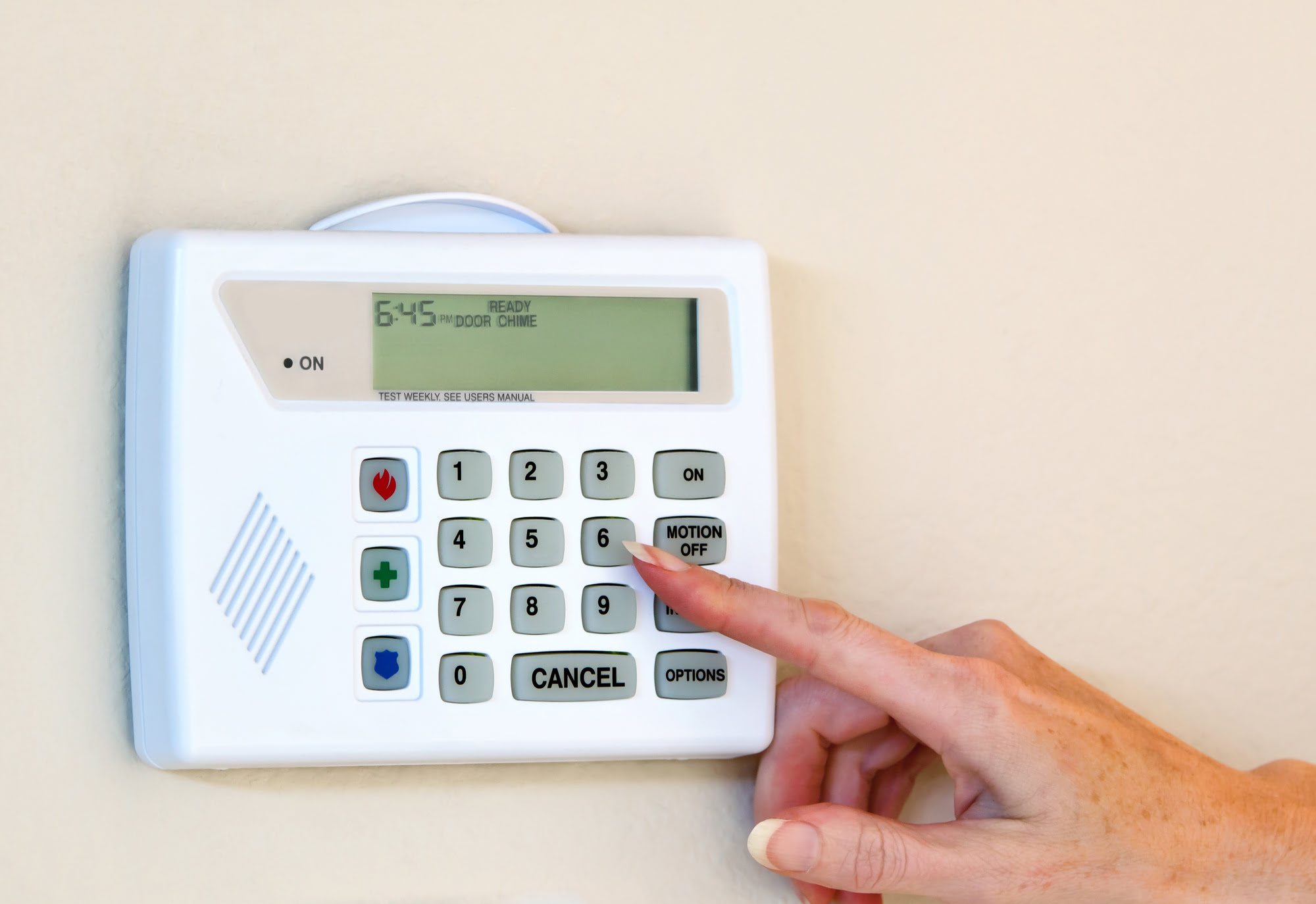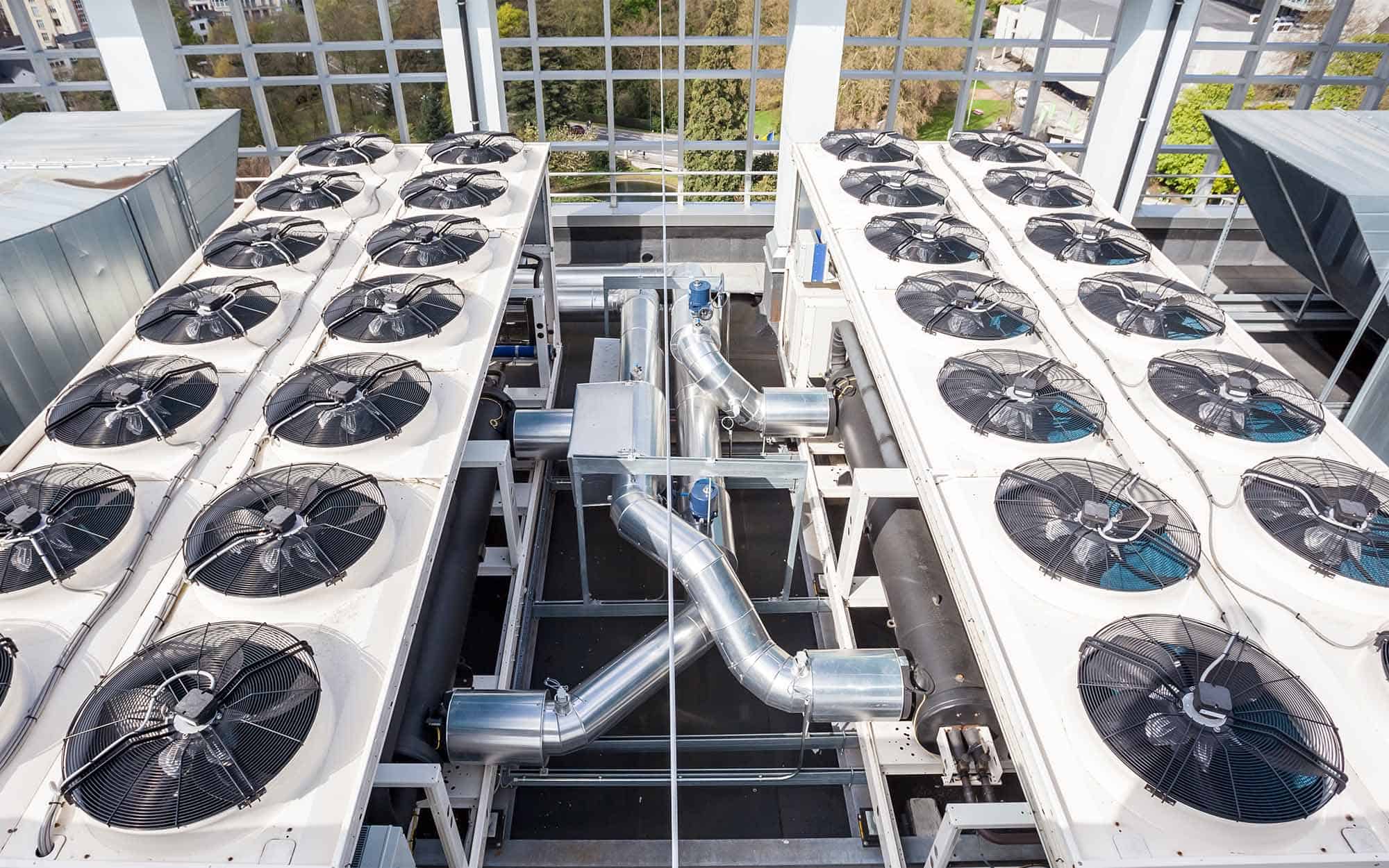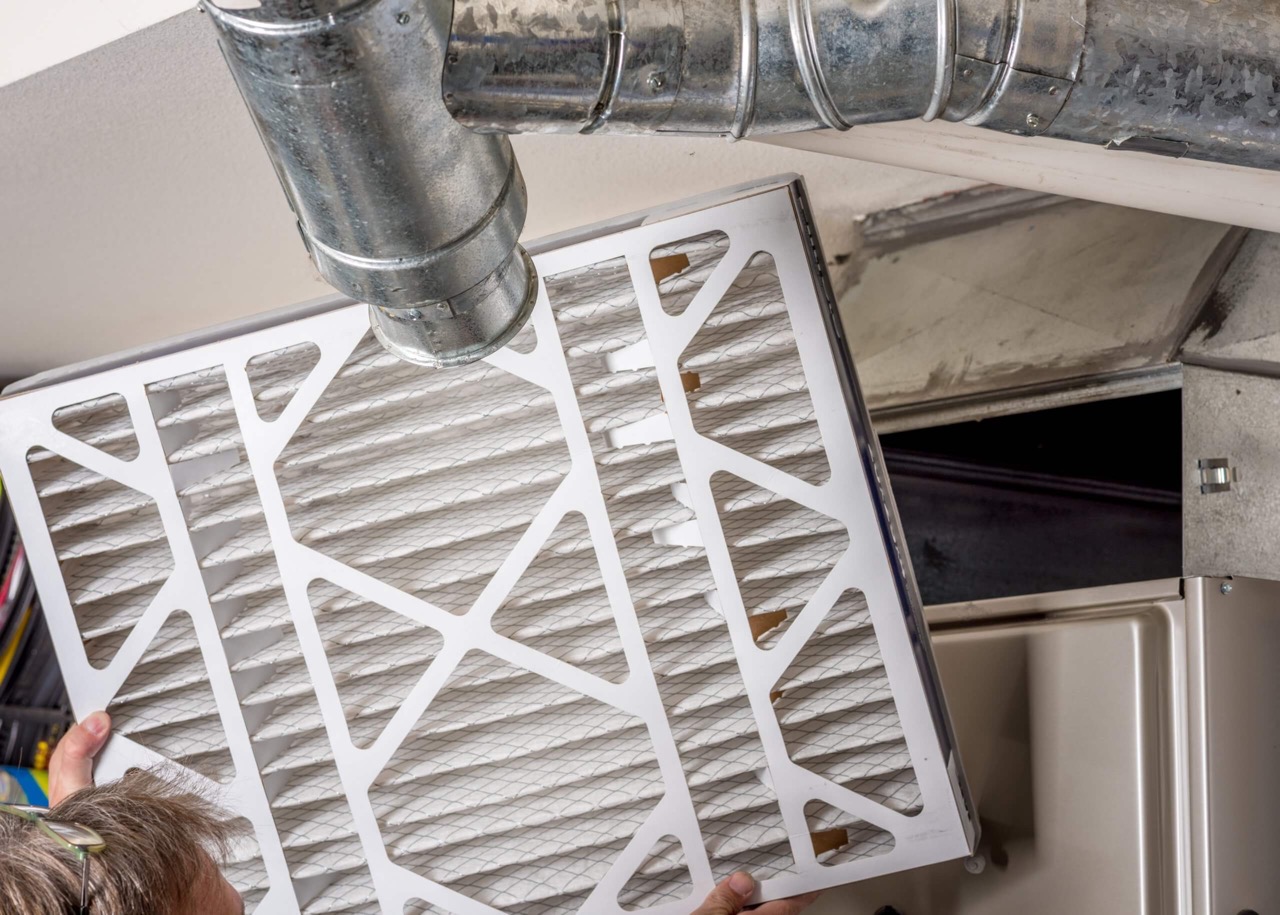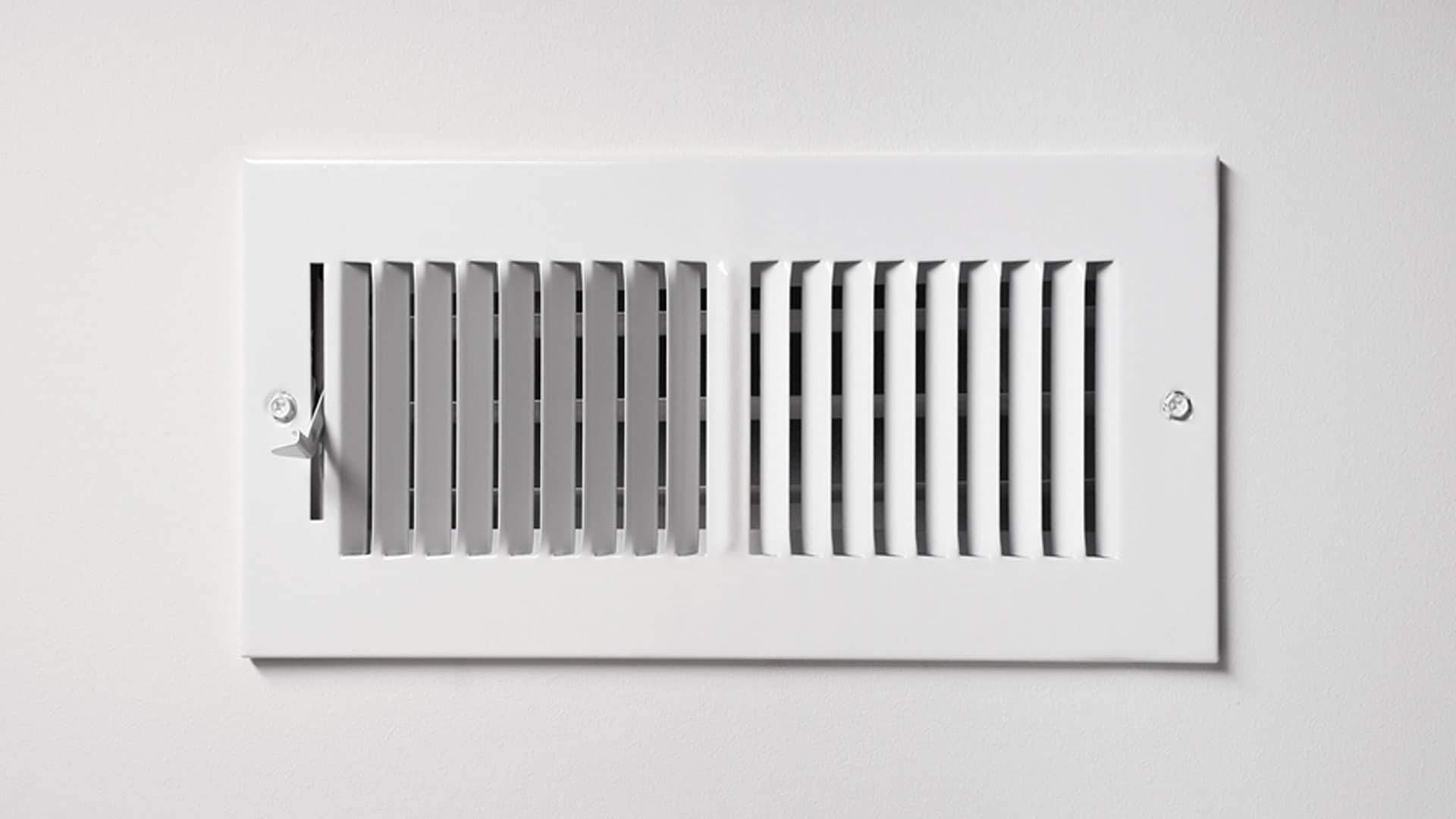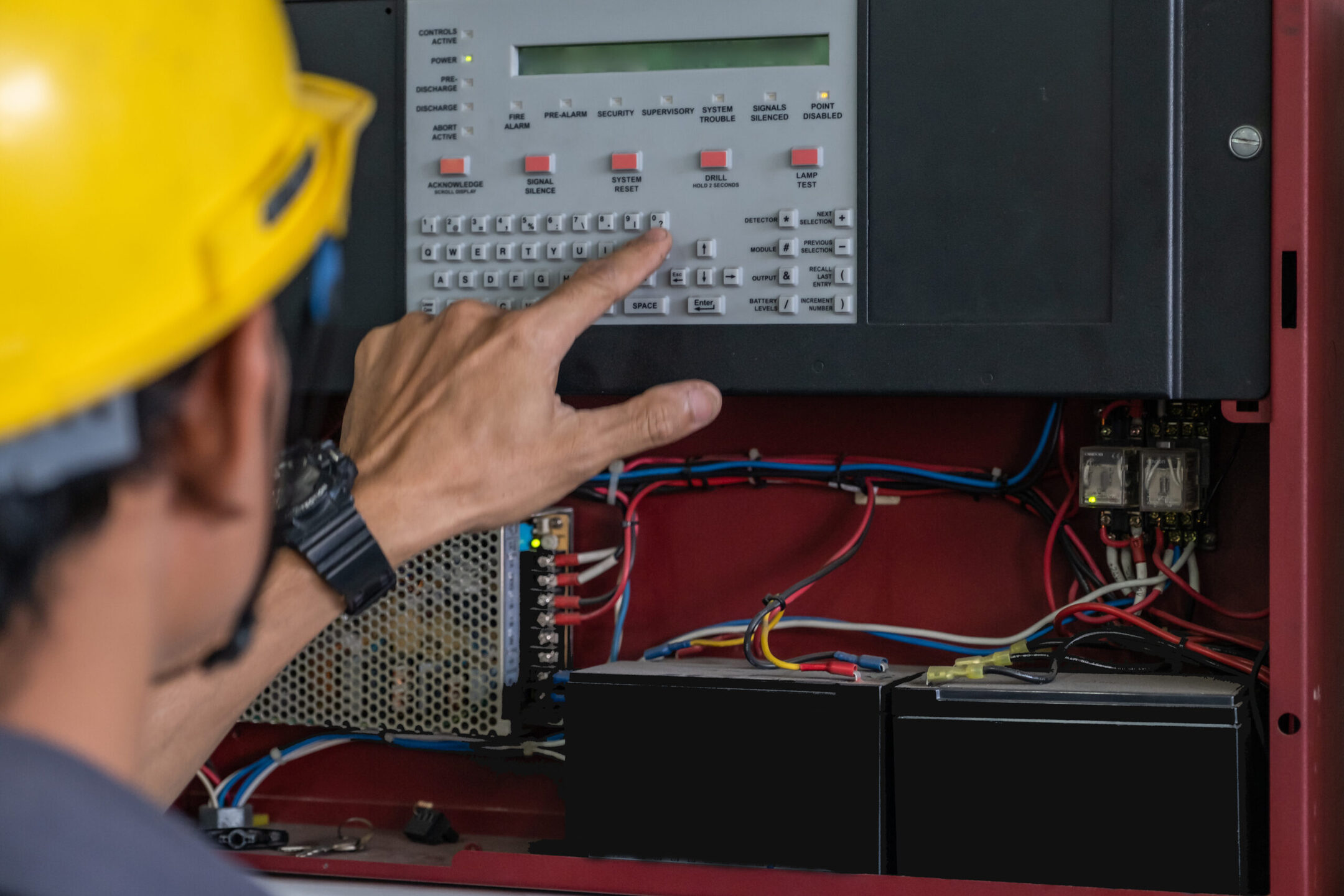Home>Home Security and Surveillance>How Many Alarm Systems In The Usa
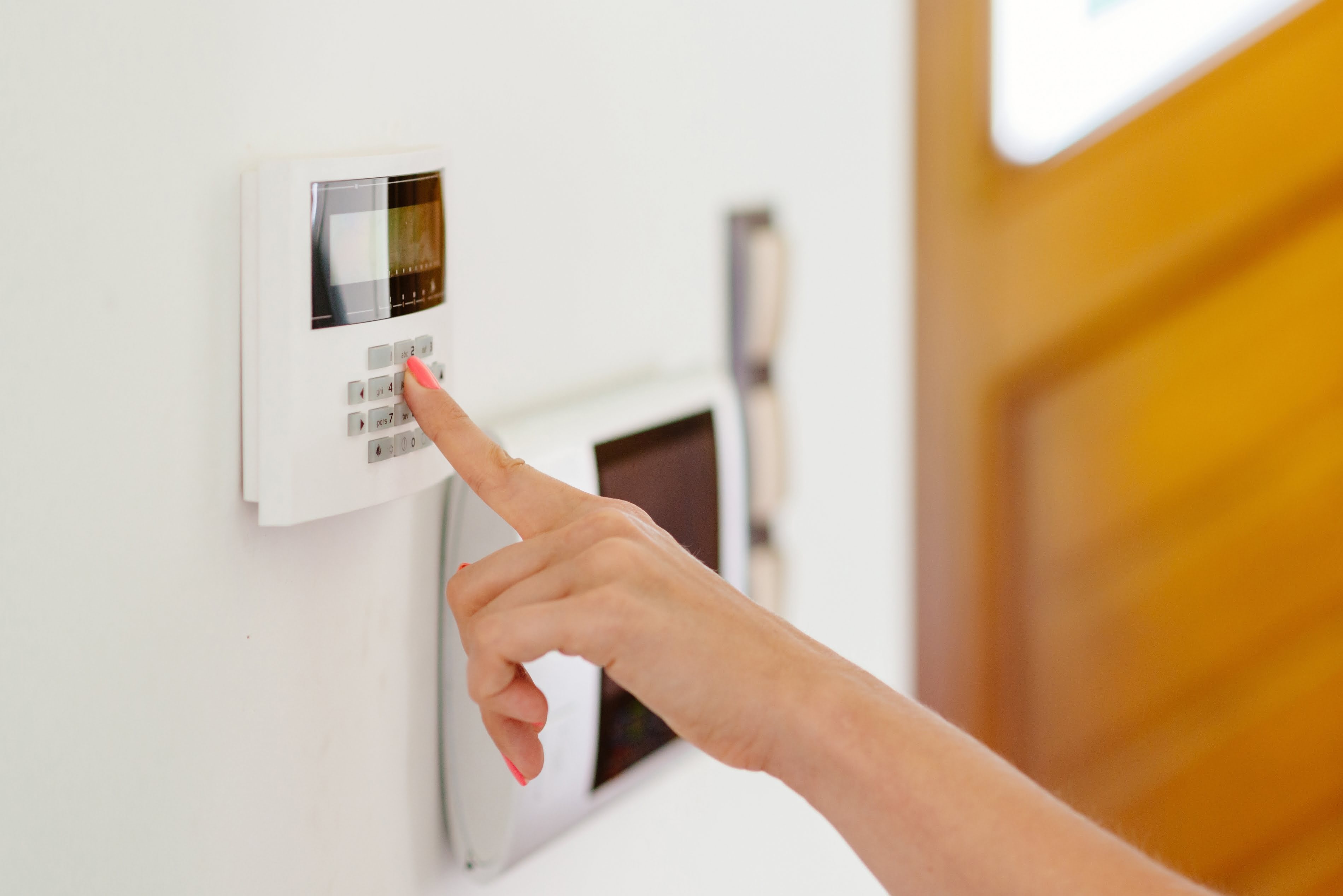

Home Security and Surveillance
How Many Alarm Systems In The Usa
Modified: March 6, 2024
Discover how many alarm systems are currently protecting homes in the USA. Learn about the latest trends in home security and surveillance to keep your family safe.
(Many of the links in this article redirect to a specific reviewed product. Your purchase of these products through affiliate links helps to generate commission for Storables.com, at no extra cost. Learn more)
Introduction
Welcome to the world of home security and surveillance. In an increasingly connected and digital age, ensuring the safety and security of our homes and loved ones has become a top priority for many individuals. This has led to the widespread adoption of alarm systems, which provide a layer of protection and peace of mind.
An alarm system is a comprehensive security solution that combines various technological components to detect and alert homeowners of potential threats or intruders. These systems have evolved significantly in recent years, incorporating advanced features such as motion sensors, door and window sensors, surveillance cameras, and even smart home integration.
But alarm systems are not limited to residential properties; they are also widely used in commercial, industrial, and institutional settings. Whether it’s safeguarding a retail store from theft, securing sensitive data in a financial institution, or ensuring the safety of students in a school, alarm systems play a crucial role in protecting our assets and maintaining a secure environment.
In this article, we will explore the various applications of alarm systems in different settings, highlighting their importance and the value they bring to each specific environment. So, let’s dive in and discover the world of alarm systems.
Key Takeaways:
- Alarm systems are like superheroes for homes, protecting against burglaries and fires. They use cool gadgets like motion sensors and surveillance cameras to keep families safe and give peace of mind.
- Alarm systems are like bodyguards for businesses, preventing theft and ensuring employee safety. They use high-tech tools like access control and fire detection to create a secure environment for everyone.
Alarm Systems in Residential Properties
In residential properties, alarm systems are essential for creating a safe and secure living environment. They offer homeowners a sense of peace by providing round-the-clock protection against intruders, burglaries, and other potential threats.
One of the primary components of a residential alarm system is the burglar alarm, which includes sensors placed on doors and windows. These sensors detect any unauthorized entry attempts and trigger an alarm, alerting the homeowners and potentially scaring off the intruder.
In addition to the burglar alarm, modern residential alarm systems often incorporate other advanced features. These may include motion sensors, which detect any movement inside the house when it’s supposed to be empty, and smoke detectors, which quickly notify residents in case of a fire or smoke presence.
Furthermore, many alarm systems now offer optional home automation integrations. This allows homeowners to control their security system remotely, receive alerts on their smartphones, and even automate tasks such as turning lights on and off or adjusting the thermostat, giving the illusion of an occupied home.
Another significant benefit of residential alarm systems is the ability to monitor the property remotely. Some systems offer video surveillance options, allowing homeowners to view live video feeds from their security cameras via mobile apps or web portals. This feature proves invaluable for keeping an eye on your home while you are away or checking in on children or elderly family members.
Moreover, many alarm systems come with professional monitoring services. When an alarm is triggered, these services receive a notification and can verify the situation, contacting the appropriate authorities if necessary. This ensures a timely response and further enhances the effectiveness of the alarm system in protecting the home.
Overall, residential alarm systems provide homeowners with peace of mind, knowing that their property and loved ones are protected. These systems act as a deterrent for potential criminals while providing immediate notifications and assistance in case of emergencies. Whether it’s a standalone system or a comprehensive smart home security solution, residential alarm systems are an integral part of any modern home.
Alarm Systems in Commercial Properties
When it comes to commercial properties, alarm systems play a crucial role in safeguarding assets, protecting sensitive data, and ensuring the safety of employees and customers. From retail stores to office buildings and warehouses, the use of reliable alarm systems is essential in maintaining a secure business environment.
One of the primary functions of alarm systems in commercial properties is deterring burglaries and break-ins. Commercial alarm systems often include robust intrusion detection systems, including door and window sensors, motion detectors, and glass break sensors. These sensors are strategically placed to cover vulnerable points of entry, instantly alerting business owners and security personnel if any unauthorized access is detected.
In addition to protection against physical threats, commercial alarm systems also incorporate fire and smoke detectors. Early detection of fire hazards is critical in preventing catastrophic damage to property and potential harm to employees and customers. By promptly notifying the authorities and initiating evacuation procedures, these systems can significantly reduce the risk of injuries or fatalities due to fire incidents.
Advanced commercial alarm systems also offer surveillance camera integration. This enables business owners to monitor their premises in real-time, remotely access video feeds, and review recorded footage. Surveillance cameras act as both a deterrent to crime and provide valuable evidence in case of incidents such as theft, vandalism, or unauthorized access.
In high-security commercial facilities such as financial institutions or data centers, alarm systems often incorporate additional layers of security. This may include biometric access control systems, which use fingerprints, iris scans, or facial recognition to grant authorized personnel access to restricted areas. These systems ensure that only those with proper credentials can enter sensitive areas and prevent unauthorized access or theft of valuable assets or data.
Moreover, commercial alarm systems are often connected to professional monitoring services for enhanced security. These services receive alerts from the alarm system and can promptly dispatch security personnel or contact the appropriate authorities in case of an emergency or suspicious activity.
Overall, alarm systems in commercial properties are essential for maintaining a secure working environment. They protect against theft, vandalism, and unauthorized access, while also providing early detection of fire hazards. Businesses of all sizes can benefit from investing in a reliable and comprehensive commercial alarm system to protect their assets, employees, and customers.
Alarm Systems in Industrial Properties
In industrial settings, where large-scale operations and valuable assets are involved, the importance of alarm systems cannot be overstated. Industrial properties, such as manufacturing plants, warehouses, and distribution centers, often face unique security challenges that require robust and tailored alarm systems to address.
One of the key objectives of alarm systems in industrial properties is the protection of valuable equipment, machinery, and inventory. Industrial alarm systems typically feature comprehensive intrusion detection systems, including sensors on doors, windows, and gates. These sensors are designed to detect any unauthorized access attempts and trigger immediate alerts to the appropriate personnel or security team.
Furthermore, industrial alarm systems often incorporate perimeter protection measures. This includes the installation of perimeter fencing, surveillance cameras, and motion sensors that detect movement around the facility’s boundaries. These measures provide an additional layer of security, ensuring that any suspicious activity in the vicinity of the property is detected and addressed promptly.
In industries where hazardous materials or controlled substances are involved, alarm systems may also include environmental sensors to monitor specific conditions. For example, gas detectors can be installed to detect the presence of harmful gases or chemical leaks, triggering alarms and allowing for swift corrective action to prevent accidents or protect employees’ health.
Another crucial aspect of alarm systems in industrial properties is fire detection and prevention. Industrial facilities often utilize complex machinery, heavy electrical systems, and storage areas that can pose fire hazards. Industrial alarm systems typically incorporate advanced fire detection sensors, including smoke detectors, heat detectors, and flame detectors. These sensors provide early warnings of fire incidents, allowing for the activation of fire suppression systems, evacuation protocols, and the prompt arrival of fire authorities.
Moreover, alarm systems in industrial properties can integrate with access control systems to ensure that only authorized personnel have access to specific areas or equipment. This helps prevent unauthorized use or tampering of machinery, reduces the risk of accidents, and safeguards sensitive or restricted areas.
Overall, alarm systems in industrial properties are critical for maintaining security, protecting valuable assets, and ensuring the safety of employees and the surrounding environment. By incorporating sophisticated intrusion detection, perimeter protection, fire detection, and access control measures, these systems play a vital role in safeguarding industrial operations and minimizing risks.
Alarm Systems in Government Buildings
Government buildings, including administrative offices, courthouses, and government agencies, often house sensitive information, high-profile personnel, and valuable assets. As a result, the security requirements for these establishments are stringent, necessitating the use of advanced alarm systems to ensure the protection of people and critical resources.
One of the primary objectives of alarm systems in government buildings is to deter unauthorized access and protect against potential security breaches. These alarm systems typically incorporate state-of-the-art access control measures, including key card readers, biometric authentication systems, and video surveillance integration. These measures ensure that only authorized personnel can enter restricted areas, minimizing the risk of infiltration or unauthorized access to sensitive information or assets.
Intrusion detection sensors are also of paramount importance in government buildings to detect any suspicious activity or breaches. These sensors are strategically placed on doors, windows, and other vulnerable entry points. Upon detection, they trigger an alarm, alerting security personnel or a central monitoring station, enabling swift response and intervention to mitigate any potential threats.
Furthermore, alarm systems in government buildings often integrate with video surveillance systems. This allows for continuous monitoring of public areas, entrances, and critical sections, providing real-time video feeds and recorded footage for investigation purposes. The presence of visible cameras acts as a deterrent to potential criminals while providing additional evidence in case of incidents.
In addition to physical security measures, government buildings also implement alarm systems for fire detection and prevention. These systems include smoke detectors, heat detectors, and fire alarms that trigger immediate alerts and initiate evacuation protocols. The integration of fire suppression systems, such as sprinklers, can further aid in containing and extinguishing potential fires, protecting lives and minimizing damage.
Emergency notification systems are also an essential component of alarm systems in government buildings. These systems, typically integrated with public address systems, allow for the dissemination of critical information during emergency situations. Whether it’s a natural disaster, an active threat, or an evacuation order, these systems ensure that occupants and visitors are informed and guided appropriately.
Overall, alarm systems in government buildings are designed to provide top-level security and protection. By incorporating advanced access control measures, intrusion detection systems, video surveillance, and fire detection, these systems play a vital role in safeguarding government assets, information, and personnel. They contribute to maintaining a secure environment where public services can be carried out efficiently and securely.
Read more: How Many Circuits In A Conduit
Alarm Systems in Schools and Universities
Safety is a top priority in educational institutions, and the implementation of effective alarm systems plays a crucial role in ensuring the protection and well-being of students, faculty, and staff. School and university campuses require comprehensive security measures to address potential threats and emergencies, creating a safe environment conducive to learning and personal development.
One of the primary functions of alarm systems in educational institutions is to address unauthorized access attempts and intrusions. These systems typically include access control measures, such as key card entry systems or biometric authentication, to restrict access to the premises and specific areas. This helps prevent strangers from entering the campus unnoticed, enhancing overall security.
Intrusion detection sensors play a significant role in school and university alarm systems. Door and window sensors are strategically placed to detect any unauthorized entry attempts. When triggered, these sensors activate the alarm system, immediately alerting security personnel and initiating appropriate emergency protocols.
Alarm systems in schools and universities often integrate with video surveillance systems. This allows for real-time monitoring of key areas, such as entrances, hallways, and common spaces. Surveillance cameras act as a deterrent to potential threats while providing valuable evidence in case of incidents. Video footage can be reviewed to identify suspects, resolve disputes, or assist in investigations, ensuring a safer campus environment.
In addition to physical security measures, alarm systems in educational institutions incorporate fire detection and response capabilities. Smoke detectors, heat sensors, and fire alarms are strategically placed throughout the campus to detect any signs of fire or smoke. When activated, these alarms trigger immediate notifications, enabling swift evacuation and alerting local fire authorities for prompt response.
Emergency notification systems are also an integral part of school and university alarm systems. These systems utilize loudspeakers or text message alerts to communicate critical information during emergency situations. Whether it’s a lockdown, weather-related threat, or any other type of crisis, these systems ensure that students, faculty, and staff receive clear and timely instructions to protect themselves.
Furthermore, some alarm systems in educational institutions offer panic button features. These buttons, often placed in discreet locations throughout the campus, allow for rapid activation of a silent alarm, immediately notifying security personnel of a potentially dangerous situation, such as an active threat or an intruder.
In summary, alarm systems are essential in ensuring the safety and security of schools and universities. By incorporating access control measures, intrusion detection, video surveillance, fire detection, and emergency notification systems, these systems provide a comprehensive security solution. They create a secure learning environment where students can focus on their studies and faculty and staff can perform their roles with peace of mind.
According to the Electronic Security Association, there are over 18 million alarm systems in the USA.
Alarm Systems in Hospitals and Healthcare Facilities
Hospitals and healthcare facilities require robust security measures to ensure the safety of patients, staff, and sensitive medical information. Alarm systems play a critical role in creating a secure environment and addressing potential threats in these settings.
One of the primary functions of alarm systems in hospitals and healthcare facilities is to control access and prevent unauthorized entry. These systems incorporate access control measures, such as key card entry systems, biometric authentication, or keypad locks, to restrict access to certain areas within the facility. This helps ensure that only authorized personnel and visitors are granted access to sensitive areas, such as operating rooms, medication storage rooms, or patient records.
Another important aspect of alarm systems in healthcare facilities is the integration of emergency call systems. These systems allow patients to call for assistance in case of an emergency or medical crisis. Pull cord systems or nurse call buttons installed in patient rooms or restrooms allow for immediate communication with healthcare providers, ensuring timely response and appropriate patient care.
For the safety and security of infants in neonatal units or maternity wards, alarm systems may include electronic tagging systems. These systems utilize removable wireless tags that are attached to newborns and trigger an alarm if the baby is moved outside of designated areas without authorization.
Fire detection and prevention are crucial in healthcare facilities, given the presence of patients who may have limited mobility or medical conditions. Alarm systems in hospitals often incorporate smoke detectors, heat sensors, and fire alarms throughout the building to provide early warning in case of a fire emergency. Fire suppression systems, such as sprinklers, can also be integrated into these systems to suppress fires and minimize damage.
Alarm systems in hospitals may also include video surveillance integration. Surveillance cameras strategically placed in public areas, entrances, and critical sections of the facility help monitor activities and identify potential security breaches or suspicious behavior. This aids in deterring criminal activity, enhancing patient and staff safety, and providing valuable evidence in case of incidents or investigations.
Furthermore, alarm systems in healthcare facilities can be integrated with a patient tracking system. This allows healthcare staff to monitor the movement and location of patients, especially those who may be at risk of wandering, such as individuals with dementia or psychiatric disorders. Alerts are generated if a patient goes outside of designated areas, ensuring their safety and preventing potential harm.
In summary, alarm systems in hospitals and healthcare facilities are crucial for ensuring the safety of patients, staff, and medical assets. By incorporating access control measures, emergency call systems, fire detection, video surveillance, and patient tracking systems, these alarm systems create a secure environment where patients can receive quality care and healthcare professionals can provide their services with peace of mind.
Alarm Systems in Transportation Systems
In the realm of transportation, alarm systems serve a crucial role in ensuring safety, security, and smooth operations across various modes of transportation, including airports, train stations, bus terminals, and ports. These alarm systems are designed to address potential security threats, enhance passenger safety, and safeguard critical infrastructure.
One of the primary functions of alarm systems in transportation systems is access control. These systems incorporate measures such as electronic key cards, biometric authentication, or vehicle license plate recognition to restrict access to sensitive areas or secure zones. This helps maintain the integrity of operational areas and prevents unauthorized individuals from entering restricted locations, such as maintenance facilities or control rooms.
Alarm systems in transportation facilities also play a significant role in the detection and prevention of potential threats, such as terrorism or criminal activity. These systems typically include surveillance cameras strategically placed throughout critical areas, such as boarding gates, platforms, or baggage handling areas. The presence of surveillance cameras acts as a deterrent and provides real-time monitoring, allowing for swift response to any suspicious activity or identifying individuals involved in criminal acts.
In addition to physical security, alarm systems are essential for fire detection and response in transportation systems. Smoke detectors, heat sensors, and fire alarms are integrated into the infrastructure to provide early warning in case of fires. Fire suppression systems, such as sprinklers or gas-based suppression systems, can quickly activate to control or extinguish fires and minimize potential damage to passengers and property.
Alarm systems in transportation systems also serve to enhance passenger safety and provide vital communication during emergencies. Public address systems are a key component of these systems, providing important announcements or emergency instructions to travelers. This capability ensures that passengers are informed and guided in case of situations such as evacuations, route diversions, or weather-related emergencies.
Furthermore, alarm systems in transportation systems can incorporate intrusion detection systems to address potential security breaches. This may include sensors installed on doors, windows, or gates that detect any unauthorized entry attempts and trigger immediate alerts. Security personnel can then swiftly respond to the situation, preventing potential threats and ensuring the safety of passengers, employees, and valuable assets.
Overall, alarm systems play a critical role in transportation systems by enhancing security, maintaining passenger safety, and protecting critical infrastructure. Through access control measures, surveillance cameras, fire detection and response capabilities, emergency communication systems, and intrusion detection, these systems enable transportation authorities to provide a safe and secure environment for all passengers and employees.
Alarm Systems in Retail Stores
Alarm systems play a vital role in ensuring the security and loss prevention in retail stores. These systems are designed to address the unique challenges faced by the retail industry, such as theft, shoplifting, and unauthorized access. By implementing robust alarm systems, retailers can protect their merchandise, maintain a safe shopping environment, and prevent financial losses.
One of the primary objectives of alarm systems in retail stores is the deterrence of theft and shoplifting. These systems often include visible surveillance cameras strategically placed throughout the store. The presence of cameras acts as a deterrent to potential thieves, as they are aware that their actions are being monitored and recorded. If a theft occurs, the surveillance footage can provide crucial evidence for identification and prosecution.
In addition to surveillance cameras, retail alarm systems incorporate various sensors to detect unauthorized removal of merchandise. These sensors can include security tags or labels attached to items, which trigger an alarm if not deactivated or removed at the point of sale. If someone attempts to leave the store without paying or tampering with the security measures, the alarm is triggered, alerting store employees or security personnel.
Alarm systems in retail stores often integrate with access control measures to limit entry to certain areas, such as stockrooms or back offices. This helps prevent unauthorized access and protects valuable merchandise, sensitive information, and cash reserves. Access may be controlled through key card entry systems, biometric authentication, or secure keypad locks.
Fire detection is another crucial aspect of retail alarm systems. Smoke detectors, heat sensors, and fire alarms are installed throughout the store to detect any signs of fire or smoke. Prompt notification of fire incidents enables the evacuation of employees and customers, as well as a rapid response from fire authorities, to minimize damage and potential injuries.
Some retail alarm systems also incorporate environmental sensors to monitor temperature and humidity levels. This is particularly important for perishable items, such as food or certain pharmaceutical products. If the temperature or humidity exceeds acceptable limits, an alarm is triggered, allowing store personnel to take immediate corrective action and prevent spoilage or damage to the merchandise.
Furthermore, alarm systems in retail stores can be connected to a central monitoring station or a dedicated security team. When an alarm is triggered, the monitoring team is notified, and appropriate actions can be taken, such as validating the alarm and contacting the store management or local authorities if necessary.
Overall, alarm systems are essential in retail stores, providing a comprehensive security solution to address theft, shoplifting, and other potential threats. By integrating surveillance cameras, merchandise security sensors, access control measures, fire detection, and environmental monitoring, these systems contribute to maintaining a safe shopping environment, protecting merchandise, and minimizing financial losses.
Read more: How Many Types Of Burglar Alarm Are There
Alarm Systems in Financial Institutions
Alarm systems play a critical role in safeguarding the assets, information, and personnel in financial institutions, such as banks, credit unions, and financial service providers. With the constant threat of theft, fraud, and unauthorized access, financial institutions require robust security measures to ensure the protection of their premises and the safety of their employees and customers.
One of the primary objectives of alarm systems in financial institutions is to prevent unauthorized access and protect against potential security breaches. These systems typically include access control measures, such as key card entry systems, biometric authentication, or security codes, to restrict entry to secure areas. This ensures that only authorized personnel have access to areas like vaults, server rooms, or sensitive customer information.
In addition to access control, alarm systems in financial institutions incorporate surveillance cameras strategically placed throughout the premises. These cameras provide continuous monitoring and recording of activities, both inside and outside the institution. The presence of surveillance cameras acts as a deterrent to potential criminals and provides valuable evidence in case of security breaches or incidents.
Financial alarm systems also include intrusion detection sensors to detect any unauthorized entry attempts. These sensors are strategically placed on doors, windows, and other potential points of entry. If triggered, they activate the alarm system and alert security personnel or a central monitoring station, allowing for swift response and intervention to mitigate potential threats.
Fire detection and prevention are also crucial components of alarm systems in financial institutions. Smoke detectors, heat sensors, and fire alarms are installed throughout the premises to provide early detection of fires. Prompt notification allows for quick evacuation, activation of fire suppression systems, and a rapid response from fire authorities to minimize the damage to property and ensure the safety of employees and customers.
Alarm systems in financial institutions may also include panic buttons or alarm duress codes. These features allow employees to discreetly activate an alarm signal in case of a robbery or hostage situation. The signal triggers an immediate response from security personnel or law enforcement, ensuring the safety of everyone present.
Moreover, alarm systems in financial institutions can integrate with video analytics technology. This enables real-time monitoring of suspicious activities, such as loitering, unauthorized access to restricted areas, or unusual behavior. Video analytics can identify and alert security personnel to potential security threats, enabling proactive intervention.
Overall, alarm systems play a vital role in protecting financial institutions. By combining access control, surveillance cameras, intrusion detection, fire detection, and panic buttons, these systems create a multi-layered security approach. This ensures the safety and security of the institution, its employees, customers, and valuable assets, while also serving as a deterrent to potential threats.
Conclusion
Alarm systems are an integral part of ensuring safety and security in various settings, from residential properties to commercial establishments, industrial facilities, government buildings, educational institutions, healthcare facilities, transportation systems, retail stores, and financial institutions.
These systems provide a comprehensive security solution, incorporating features such as access control, video surveillance, intrusion detection, fire detection, and emergency notification systems. By integrating these components, alarm systems create layers of protection and contribute to maintaining a secure environment.
In residential properties, alarm systems offer homeowners peace of mind by providing round-the-clock protection against burglaries and other potential threats. They incorporate various technologies, such as motion sensors, door/window sensors, and surveillance cameras, enabling remote monitoring and control.
Alarm systems in commercial properties play a crucial role in safeguarding assets, protecting sensitive data, and ensuring the safety of employees and customers. They help deter burglaries and break-ins, incorporate fire detection measures, and often integrate with professional monitoring services for swift response and intervention.
Industrial properties benefit from alarm systems that protect valuable equipment, detect breaches, and incorporate fire detection systems. These systems contribute to maintaining the security of assets and minimizing risks in high-security environments.
Government buildings rely on alarm systems to control access, detect breaches, and provide early detection of fire hazards. These systems enable safe and secure operations within administrative offices, courthouses, and government agencies.
In educational institutions, alarm systems address unauthorized access, assist in emergency situations, and enhance overall safety for students, faculty, and staff. These systems incorporate measures such as access control, emergency call systems, and fire detection equipment to protect the well-being of all individuals within the campus.
Hospitals and healthcare facilities utilize alarm systems to ensure patient safety, protect sensitive information, and detect fire or emergency situations. These systems integrate fire detection, emergency call systems, and surveillance cameras to create a secure environment for patients and staff.
Transportation systems rely on alarm systems to enhance security, provide fire detection, and facilitate emergency communication. These systems contribute to the safety of passengers and employees across airports, train stations, bus terminals, and ports.
Retail stores benefit from alarm systems that deter theft, incorporate merchandise security measures, and integrate with surveillance cameras. These systems enable loss prevention and maintain a safe shopping environment.
Financial institutions utilize alarm systems to prevent unauthorized access, integrate surveillance cameras, and enhance overall security. These systems protect assets, valuable information, and ensure the safety of employees and customers.
In conclusion, alarm systems play a crucial role in providing safety, security, and peace of mind across a wide range of environments. By incorporating advanced technologies and comprehensive security measures, these systems help deter potential threats, detect incidents, facilitate quick response and intervention, and contribute to creating a secure environment for individuals, assets, and information.
Frequently Asked Questions about How Many Alarm Systems In The Usa
Was this page helpful?
At Storables.com, we guarantee accurate and reliable information. Our content, validated by Expert Board Contributors, is crafted following stringent Editorial Policies. We're committed to providing you with well-researched, expert-backed insights for all your informational needs.
